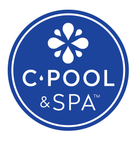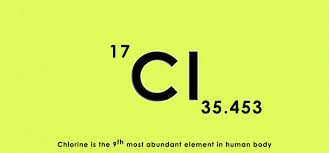MYTH : Using Liquid Chlorine or Other Hypochlorites Will Raise pH
Because the bottled pH of Chlorine is high, many think that by adding chlorine it raises the pH dramatically. Not true. Do not worry about the effect of using liquid chlorine, liquid bleach, cal hypo or even lithium hypo on pH. All of them have a net zero (or a very little) change of pH.
The reason that most people believe that hypochlorites raise pH is that all of these hypochlorites have a high pH (usually from 11.0 to 13.0). The reality is different because of the chemical interaction of hypochlorites and water (and CYA). In reaction, the hypochlorites produce HOCl and OH–. But when the HOCl is used in an oxidation reaction or when it is finished killing organisms or when chlorine is destroyed by sunlight, it makes HCl (hydrochloric acid)(acid reduces pH). The amount of acid made is almost equal to the amount of hydroxide produced so the net difference to pH is zero.
FACT : Got to have CYA to protect chlorine from sunlight
HOCl is the killing form of chlorine in water. It is produced by each form of chlorine (hypochlorites). It is estimated that about 90% of HOCl and OCl– are destroyed by UV. The remaining 10% of HOCl and OCl– are degraded by disinfection and oxidation reactions. Trichlor and Dichlor tabs and granulars contain CYA and will protect against the UV rays. They will lower pH and alkalinity because they are acidic (trichlor has a pH of 3.5). Hypochlorous acid (HOCL) is produced upon addition and HCl (hydrochloric acid) is produced when HOCl is degraded by UV. No OH– (hydroxide) is produced by trichlor. Trichlor makes acid upon addition and it makes more acid when the chlorine is degraded or used. Dichlor is nearly neutral (dichlor pH is 6.5). It makes HOCl (hypochlorous acid) and some OH– (hydroxide) upon addition which almost offset each other. Therefore there is no effect on pH, only the amount of free chlorine.
MYTH : Chlorine tabs just add chlorine to the water
In addition to lowering pH and alkalinity, trichlor and dichlor will also add significant amounts of cyanuric acid to the water. For each 10 ppm of chlorine added by trichlor, it increases CYA by 6 ppm. For each 10 ppm of chlorine added by dichlor, you increase CYA by 9 ppm.
FACT : Sunlight eats free chlorine
Outdoor Pools Lose about 1.0 PPM Free Chlorine per Day to Sunlight. Chlorine loss in direct summertime sunlight is 75% in 2 hours or a complete loss in 4 hours without CYA. Most pools that have 30 ppm or more of CYA (cyanuric acid) in summer will have a chlorine loss of about 1.0 ppm of free chlorine per day due to UV. This is a chlorine loss of 7.0 ppm per week due to sunlight. Add another 3.0 ppm per week for disinfection and oxidation and you have a chlorine demand of about 10 ppm per week. This makes it difficult to add enough chlorine to last for a week on a once-a-week service. It is therefore recommended to use liquid chlorine and then supplement with trichlor in a chlorinator or floater (and hopefully not in the skimmer). This will increase the kill rate of chlorine and increases the free chlorine needed for controlling bacteria and algae. It will also help the buffering capacity of the water.

